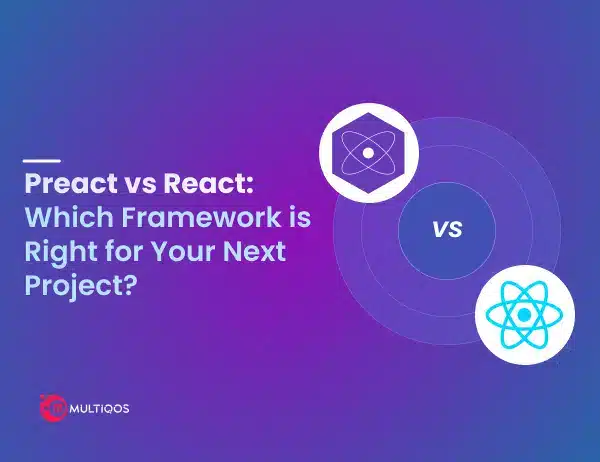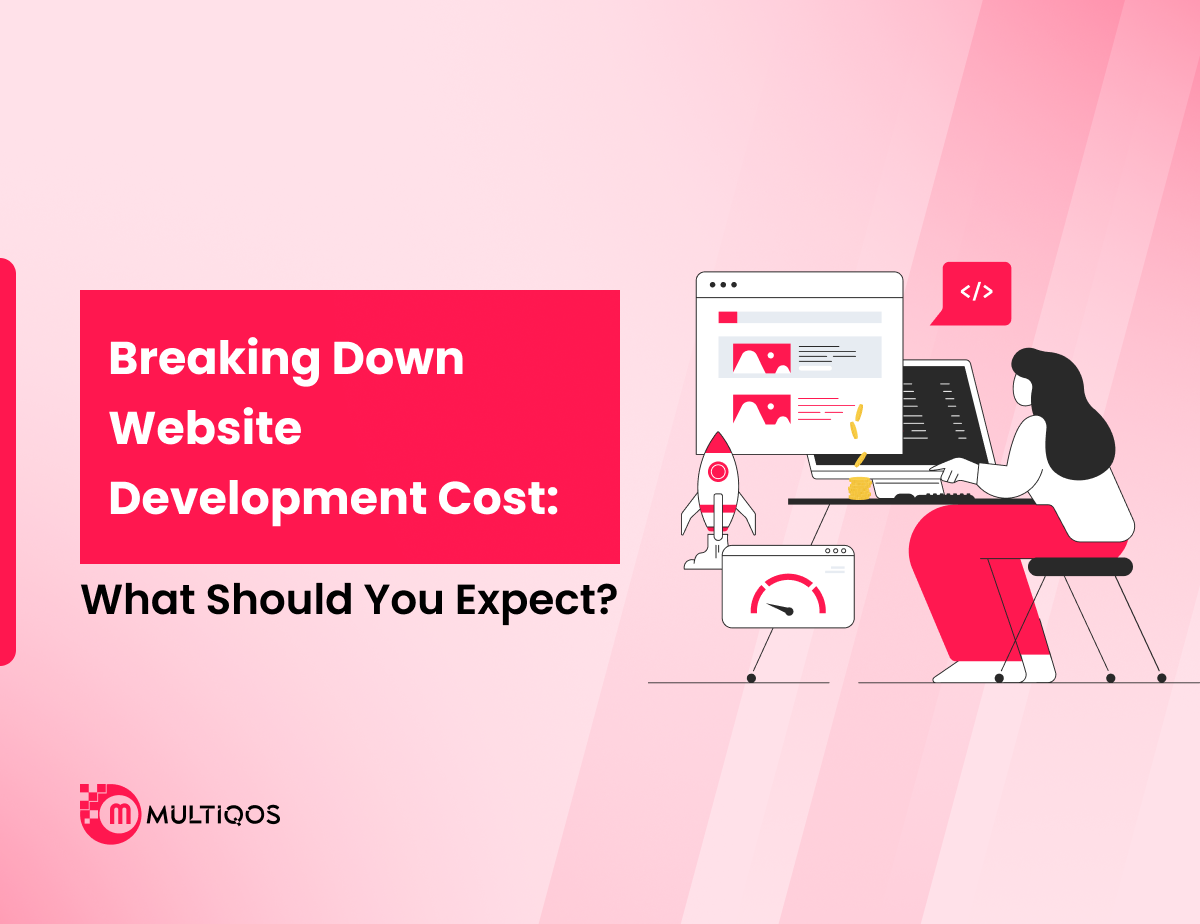Preact vs React: Which Framework is Right for Your Next Project?

Overview
When choosing between Preact and React, it is necessary to consider the main differences and how they align with a particular project.
Each system has its pros and cons. To provide some background, React powers more than 39% of frontend projects connected to it is enormous with more than 180,000 stars on GitHub. Preact is approximately, around 3KB minified – roughly 15 times smaller than React, with 45 KB.
Preact has grown as well, and the load object has been stabilizing, especially in performance-critical projects. But the choice depends on what you are building.
Let us break it down for you and discuss everything you need to about Preact vs React. Before we start, let us first start with the basics!
What Exactly is Preact?
Preact is a relatively light version of React and it controls many of the similar ideas and syntax which makes this tool perfect for developers who’re already familiar with React. The one thing that sets it apart is the size – Preact is significantly smaller than React.
At around 3KB when minified and gzipped, it rates among the highest and fastest JavaScript frameworks in terms of loading time. Still, Preact is a little smaller than the original React, and it contains most of the main features of React, including a component-oriented approach and a virtual DOM model.
Performance is, without doubt, the main area that Preact is geared toward providing solutions to both small and big organizations. For applications where initial load time is critical, or where the application is specially optimized for mobile-first experience,
Preact can be an excellent choice. Still, it does not come with the full stack support of React, but it does support almost all React libraries, which makes it easier for developers to incorporate it into their systems.
What is React?
React is a powerhouse in the world of web application development. It is one of the most used Javascript frontend libraries for creating interfaces. Originally built and released by the Facebook development team and since then it has become a go-to tool for building rich and high-performance web applications.
In its virtual DOM and component system, React enables developers to design gigantic UIs in terms of the components that make up an application.
React is supported by a huge community and an open ecosystem. This is further augmented by an extensive list of libraries that are available for managing states through Redux, handling forms through dedicated libraries, and routing solutions amongst other things that make React a preferred choice for startups developing large-scale web applications.
That is why there are numerous tutorials, videos, forums, and support that do make React the best choice, for many developers.
“Let’s compare them head-to-head.”
Comparison Chart: Key Differences Between React and Preact
“Here’s a quick comparison chart to help visualize things:”
| Feature | Preact | React |
| Performance | Excellent performance due to small size | Fast, but larger bundle size |
| Size | ~3KB (minified + gzipped) | ~45KB (minified + gzipped) |
| Virtual DOM | Yes | Yes |
| Learning Curve | Low | Moderate |
| Ecosystem | Smaller ecosystem, but stable and still growing | Large and mature ecosystem |
| Popularity | Less popular | Widely adopted and populr |
| Community Support | Smaller and active community | Large and active community with a variety of resources |
| Time-to-Market | Faster, due to simple and smaller size | Slower, due to large bundle size and complexity |
| API Compatibility | Compatible with React but some advanced features lack | Full API support |
When to Use Preact?
Preact excels in certain use cases where performance is a priority and simplicity is desired. Here’s when you might consider using Preact:
- Small to Medium Applications: Preact is perfect for apps that are small and don’t require a complex state management system.
- Mobile-First Websites: Using Preact is recommended when you are designing a mobile-first website or mobile-first designs where performance and load time are essential.
- Landing Pages or Static Websites: If you don’t require a complex application with all the functionality that React provides, for example, a landing page or a one-page site, then Preact will help you blow the dust off.
- Replacing React in Existing Projects: If you’re already using React and want to make your bundle size smaller without starting from scratch then React can be your replacement without serving minimal changes.
When to Use React?
While Preact has its merits, there are a few scenarios where React is a perfect choice:
- Large-Scale Applications: React is a great platform for complex, large applications that demand advanced functionalities, scalability, and a rich ecosystem of tools.
- Enterprise-Level Projects: If you’re someone who requires robust community support, extensive documentation, and third-party integrations, then React is the best-fit reliable option for businesses.
- Feature-Rich User Interfaces: Does your project require complex UI elements such as advanced state management, dynamic forms, or real-time data? If yes, then React’s extensive feature set will help streamline development.
Pros and Cons: Preact vs. React
Pros of Preact:
- Lightweight: Faster load time and smaller bundle size.
- Faster Initial Rendering: It can result in faster initial rendering, especially in smaller and simpler architecture.
- Easy to Learn: It is almost similar to React, so the learning curve is small.
- Performance: Optimized for speed, especially on mobile.
- Compatibility with React: This means React components and libraries can work seamlessly with minimal changes.
- Lower Memory Usage: Use minimal memory compared to React, making it a preferred choice for resource-constrained environments such as embedded systems or mobile devices.
Cons of Preact:
- Smaller Ecosystem: Offers several libraries and tools.
- Lack of Full React Compatibility: There are a few functionalities that might not work seamlessly or require workarounds such as React’s context API and prop types.
- Limited Features: It provides limited functionalities and some advanced React features are unavailable.
- Fragmentation of the Ecosystem: Due to its smaller ecosystem, it may lead to less community support and developers might need to develop custom solutions or search for alternatives.
Pros of React:
- Flexibility: Provides high-end flexibility in terms of architecture, allowing ReactJS developers to choose routing libraries, various state management solutions, and other integrations based on their project requirements.
- Large Ecosystem: It offers a wide range of third-party tools and libraries.
- Scalability: Highly preferred for large and complex applications.
- Community: Have an active and massive community support with loads of resources.
- Rich Developer Tools: Offers excellent developer tools that help with optimizing and debugging applications.
Cons of React:
- Boilerplate Code: Might ask for boilerplate code for things such as state management and component organization, especially if you’re developing enterprise apps with complex requirements.
- Larger Bundle Size: Slower load times, especially for small projects.
- Complexity: Might be overkill for simple websites.
- Steeper Learning Curve for Advanced Features: React is easy for basic use cases, but when it comes to mastering React’s advanced patterns such as context, hooks, etc. can be challenging.
How to Choose the Right Framework for Your Project?
If you are planning to develop a complex application that requires a vast number of libraries and supports numerous features, you should go with React. However, if you are developing a simple project, where performance is critical, including the size of the file to load into the browser, then Preact will serve you best.
A good ReactJS development company will often tailor its choice of a framework based on the client’s budget, timeline, and most importantly requirements. So, it is essential to weigh the trade-offs based on what you prioritize most, let’s break it down:
1)Project’s Requirements:
- React is suitable for complex application development with many features, including multiple integrations and complex UI components.
- Preact is more suitable for small, light, and high-performance critical applications because of its architectural simplicity.
2)Minimizes Compatibility Issues:
- React has a larger ecosystem and it integrates with tools and libraries more easily.
- While there may be the need to do some extra work to make Preact compatible with a few specifically react-centric libraries, preact is interoperable with almost all the other react elements or components.
3)Eases the Learning Process:
- Preact seems to be extremely easy to extend and is designed with a more straightforward API and on top of that it is easier to learn compared to other frontend frameworks.
- React is more powerful than Angular in most areas, but it has steeper initial instructions, though it provides more vast information for further study.
4) Community Support:
- React has a large and engaged user base as well as a plethora of tutorials, documentation, and open-source projects, so it offers broad support.
- On the other hand, Preact’s community is not as vast as Vue or React and yet it offers solid support and is stable enough for simple projects.
5)Ensures Scalability & Long-Term Viability:
- React is designed for scalability, so if you have an application that needs to grow over time then this framework is great for you.
- Preact is ideal for a small-sized project and can also scale up with a little bit of planning. However, compared to React it will be more viable in the long run especially where the application is to be developed for use in a larger organization.
However, both can sustain the long-term depending on the growth and the needs of one’s project.
Wrapping Up
In closing, we would like to mention that React and Preact both have their advantages and serve different purposes. ReactJS development is a preferred choice for large-scale applications with complex functionality a strong community and a vast number of libraries and tools. Whereas Preact is ideal for applications where the performance and size of the application play a critical role. However, the right choice of technology depends on the specific characteristics and complexity of the project.
And remember, if you ever need more tips, or require help in choosing the right framework, you can always hire dedicated developers from a leading service provider as they can assist in working with the right platform based on your project, guaranteeing a successful outcome from the beginning of the project.
Frequently Asked Questions
Preact is a smaller React version, which makes it slightly faster and with a smaller file size vector compared to React and offers more features, options, and tools designed for large-scale apps. The library of React is around 45KB and at the same time, Preact is around 3 KB if it is minified.
The features typically associated with React make them more adapted to large-scale projects, including the strong and vast support system of libraries and third-party software. It also has management tools for state, routing, and testing; something which is required when developing complicated applications. So we can say that React is highly preferred for large application development.
Yes, there are a few React libraries that are compatible with Preact. But some advanced libraries like Content API cannot be used with Preact. Instead, you can use specific Preact-compatible versions of libraries.
Compared to React, Preact is easier to learn because it has a simplified API and fewer concepts. Similarly, React can be difficult to learn if you’re a newbie. However, due to its larger community and educational resources, it becomes easy to learn in the long run for more complex use cases.
Get In Touch







